-
Posts
808 -
Joined
Content Type
Profiles
Forums
Gallery
Events
Posts posted by Martes
-
-
Thanks, Gerard!
So do I understand correctly:- when such a report was submitted, with a captain's request of adding a false keel because the ship is leewardly, the (Toulon) dockyard would most probably simply add ~15 cm parallel to the existing keel, and be done with it?
- if the design was, for any reason, repeated a decade or two later, this additional false keel would be included, but the underwater shape of the cutwater forward would essentially remain the same?
-
Concerning the Salamandre, I asked a friend who knows French much better than myself to translate the handwritten report that is present in the book.
And I was very surprised with the result. I half expected it to be very similar to the one for Etna I posted above, but...
Quote...made a transcription of La Salamandre's devis from page 63. However, not much about sailing qualities of the ship. Essentially, this account is of an inventory nature.
Devis de la Galiotte du Roy La Salamandre
Cette Galiotte avec quarante cinq Tonneaux de lest et quatre mois de vivres pour soixantes hommes mise a la difference de vingt huit pouces gouverne bien, capeye bien, et va de meme a toutes les allures, mais sus le largue particulierement; mais comme elle derive beaucoup, une contrequille luy est absolument necessaire, avec un estrin[?] a l’etambot pour que le gouvernail ne soit pas expose a s’engager lors quil est question de se toüer ou de traverser d’un des amarres.
Which he translated as:
Quote[...] steers well, behaves in storms well, and sails well (or better indeed: the same) in all wind directions, especially at quarter winds. But as it drifts a lot, a false keel (underneath the actual keel) is absolutely necessary to fit, and a heel at the sternpost's bottom, so that the rudder is not entangled by the ropes when hauling (towing) or at the moorings.
The question (primarily for @G. Delacroix ) is therefore, how to add a correct false keel and gripe per French practice. The ship has relatively pronounced inclination aft, so adding a full false keel that is parallel to the original would increase the draft, which I am not sure would have been welcome.
Tentatively, I looked at several contemporary ships after British refits (Embuscade, Unicorn series, which were copies of the privateer Tygre, the corvette Cygnet, ex-Guirlande), which usually did not extend the keel, but added a very dinstinctive gripe, and did the same:
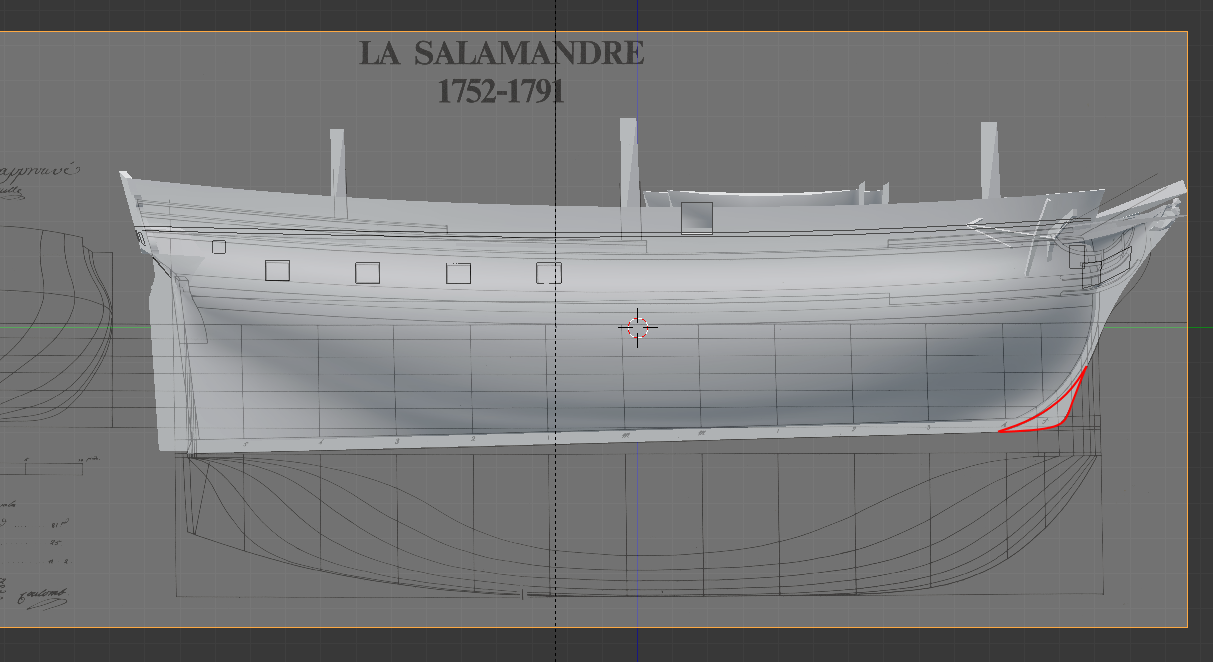
Another way I thought of was adding a triangular false keel that wouldn't increase the draught aft, but increase to certain degree the draught forward.
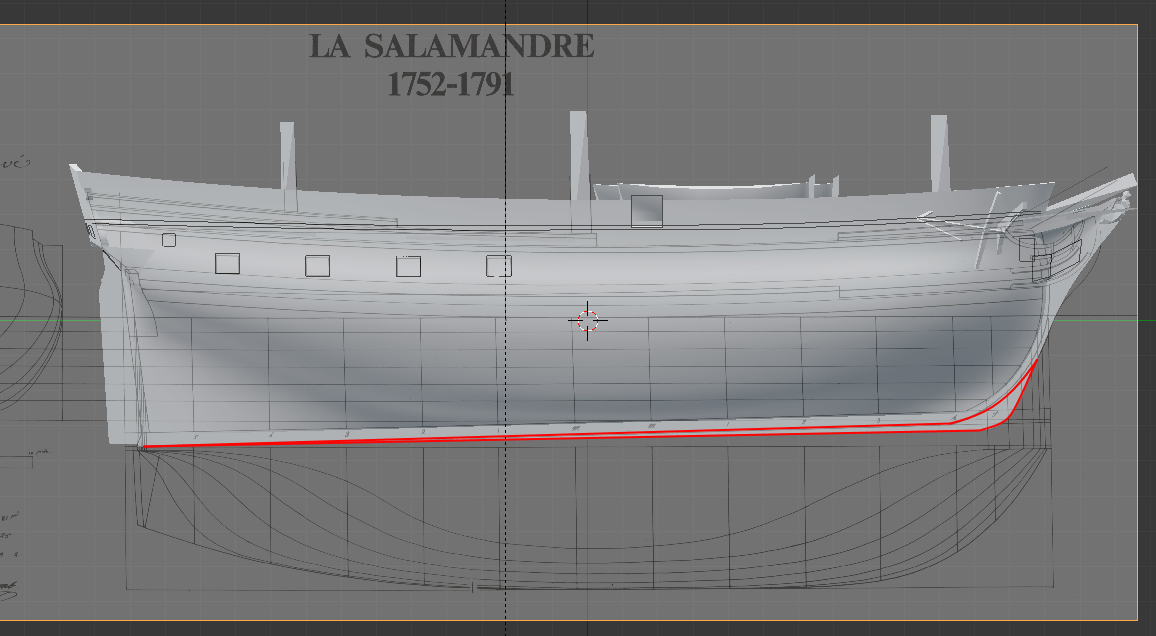
And then there is always a possibility to add a full false keel similar to the Psyche, but at a cost of increasing overall draught:
What would be the most correct here?
-
- 3DShipWright, mtaylor, CDR_Ret and 1 other
-
 4
4
-
On 3/21/2024 at 12:16 AM, Nirvana said:
Again I could be wrong, but looking at the "distance" to the other ships in the foreground she must be a huge one.
It is a point. The way I see it, she's about the size of the ships in the foreground, ~100 feet in length, and with comparable mast height.
On 3/21/2024 at 3:18 AM, Harvey Golden said:Features quite an old engraving and some early description. The photo atop shows a schooner with two jib-headed sprit sails.
One of the first images google gives, of course I've seen it. But it's not comparable to the size of the depicted ship, nor the rig is close to proportion.
- mtaylor and thibaultron
-
 2
2
-
3 hours ago, realworkingsailor said:
Almost front and centre is a small schooner
Thanks, I saw those small and early ones.

What I am looking for are any depictions of very tall, modern-looking, schooners with gaffless triangular sails that can be with any confidence dated between 1750 and 1840.
- mtaylor and thibaultron
-
 2
2
-
8 hours ago, Dr PR said:
Marquardt's The global Schooner
Unfortunately, there is nothing decisive there as well.
The examples given in the book show either small gaff, or divided sail, or sliding gunter (featured on Preble's gunboat), which is still separate from the mast. That's the closest, but still not that.
- Harvey Golden and mtaylor
-
 2
2
-
6 hours ago, Harvey Golden said:
Phillips-Birt's "Fore and Aft Sailing Craft" (1962) and Morris's "The Fore and Aft Rig in America" (1974) also cover origins/history of these types.
Thanks, I checked those books. Unfortunately, there is no indication for similar ships, again, before mid-19th century. Every example before features at least a small gaff above, or the sail is actually divided to two.
- Harvey Golden, thibaultron and mtaylor
-
 3
3
-
First of all, it is a watercolor, indeed, hence the transparency.
And second I think I was misunderstood a little.
It wasn't a question of what this rig is.
And I didn't even say it's impossible to have at the time, but just extremely rare and therefore worth a bit of exploration.
What I was interested in are any additional documentation or depictions of this exact type of Bermudan schooners earlier than 1830, because I can't find any. Especially with this ratio of ship length to height of the masts.
And yes, it was a joke about the time traveling, but still, the ship that we see differs from even from the Bermuda schooner in the third post, having considerably longer masts for shorter hull, and implying a very different hull form with an extended keel.
- mtaylor and thibaultron
-
 2
2
-
3 hours ago, ccoyle said:
That's a Bermuda schooner rig.
There are, unfortunately, very little depictions of ships with this kind of rig from 18th or early 19th century.

This is dated 1843 and it's the earliest I could find, with earlier images being closer to this:

Continuous triangular sails are extremely rare. I don't say it's impossible, but very curious nevertheless.
Also note the height of the masts and the sails on the original image.
- thibaultron and mtaylor
-
 2
2
-
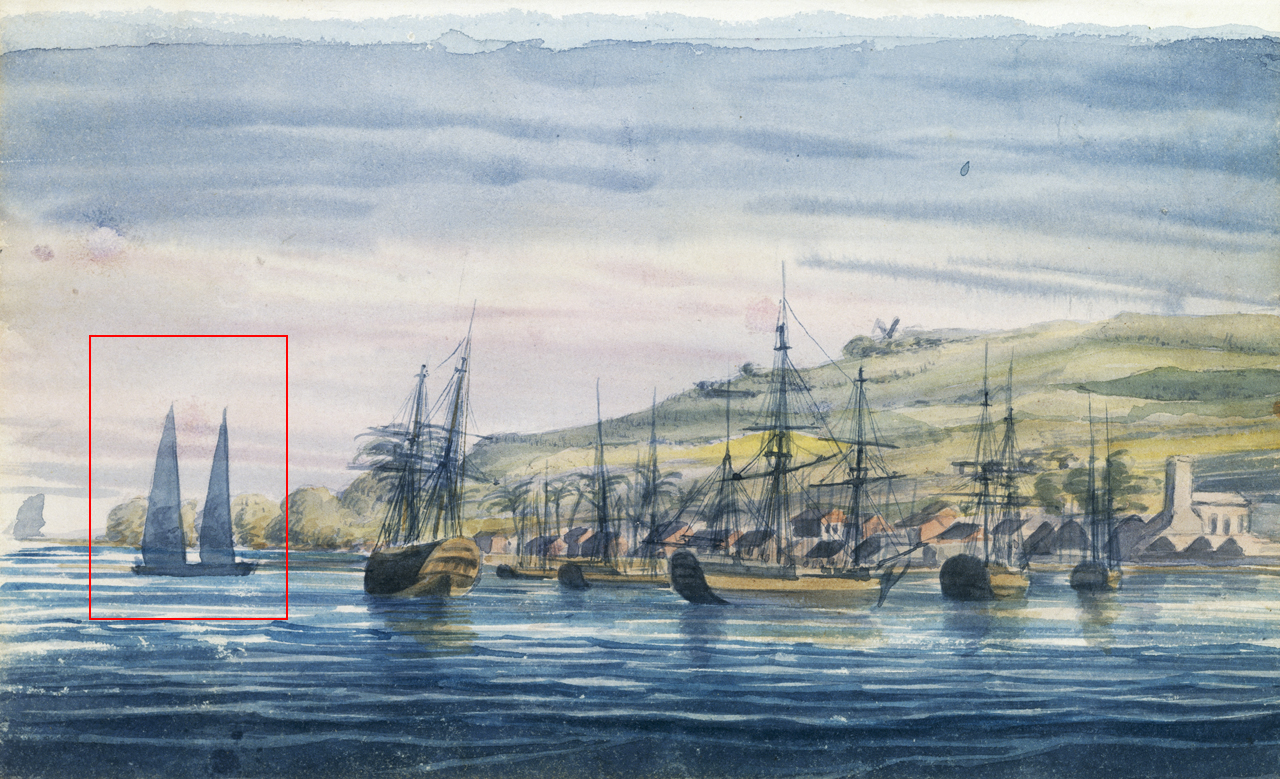
https://www.rmg.co.uk/collections/objects/rmgc-object-103243
View of Bridgtown and part of Carlisle bay in the Island of Barbadoes by Captain Edward Pelham Brenton, circa 1820
Was this type of rig already used? Because otherwise it looks kind of like a modern yacht

- mtaylor, thibaultron, Harvey Golden and 1 other
-
 4
4
-
3 hours ago, Lieste said:
The earlier Salamandre really pre-dates widespread iron carronades in French service.
Oh, I know, but I just consider some scenarios if similar ship has survived or was built in 1800s. Quite like the model from Musee de la Marine.
-
Captain of the Etna wrote:
In the three months that I sailed her, I found that she steered
perfectly well, that she carried the sail sufficiently and waved
in the wind. Its most advantageous course is the closest
with a fresh wind, she rarely fails to tack, with the wind ahead,
and loses very little when tacking, the movements are very
gentle and the mast only tires by its extreme height.At least that's what Google translate gives me

I think a similar description for the Salamandre may be present on page 63 of the book, but the text is in handwriting and it's very difficult to make out with my very rudimentary knowledge of French terminology.
-
I had some thoughts if I can substitute the 6pdr (French) guns on Salamandre with 32-pounder carronades - after all the battery is relatively low, the ship framing is very heavy, but the basic establishment for a bomb vessel was 24-pounder carronades. And there should be something on the upper deck - 12-pounder carronades, maybe.
Do you have any information about how a French-built bomb ketch would behave under sail? Speeds, maneuverability? The book says Etna was quite handy, while the handling of most of the British ships of this class was very lamented.
-
43 minutes ago, 3DShipWright said:
So forgive my ignorance but how is the game set up: do the models you import only appear once (example: USS Constitution), or are you essentially importing a class of ship from which the game will spawn multiple instances (example: a 44-gun Frigate)?
You have a config file, that indicates the hull model, the textures (damage set, colour per country, if you want it to by dynamic), the positions of masts, sails and flags. For Constitution that would be something like 44gfrigate_us.cfg
Then you have a database (usrships.cfg), where you set up named entries, that contain the ship's data, weapons, etc, and references the cfg file.
When constructing a scenario in the editor you insert an entry from a database. Of course, you can add/remove/copy/edit database entries. -
14 minutes ago, 3DShipWright said:
QQ: Is it possible for you to bring back some of the old texturing themes you did and mix them in with your newer ones? Just one man's opinion here, but I think some variance among the ships would go a long way towards the immersion factor. For example: if some ships could use yellow and black instead of the white stripe down the gun deck, that would be awesome.
Each model is done in three paint schemes - yellow, white and red-with-narrow-white stripe. Then it's just a question of the config file selected for the ship in database. I just like the white better than others, so they feature on the screenshots mostly.
What I didn't try is earlier variant, covering the upper bulwarks in blue or red with gold decals, but it seems a little bit too archaic. -
-
Reluctant as I am usually to post early images, allow me to present is my interpretation of the bomb vessel La Salamandre.
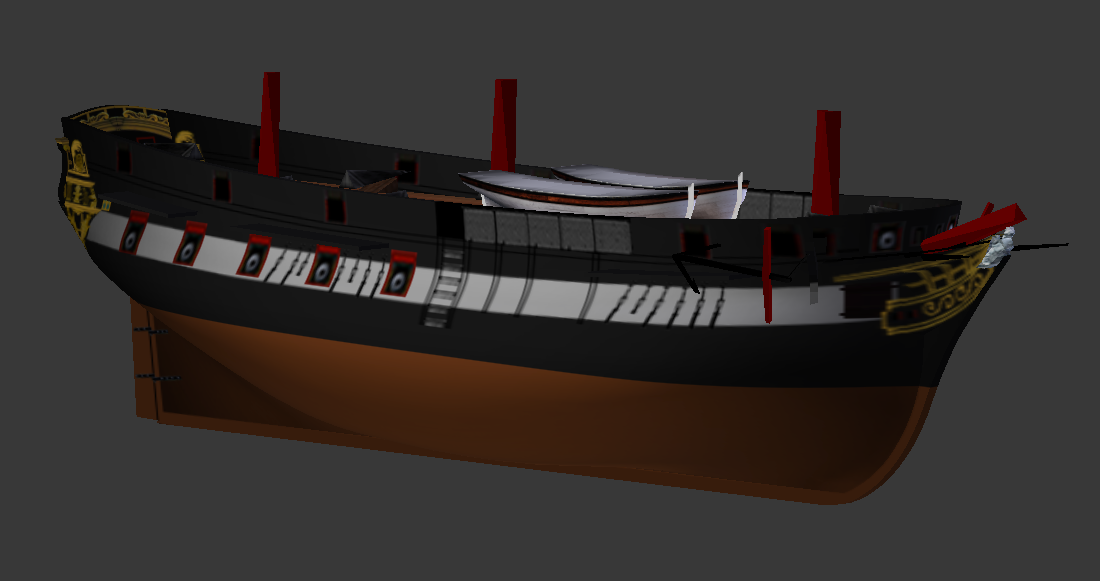
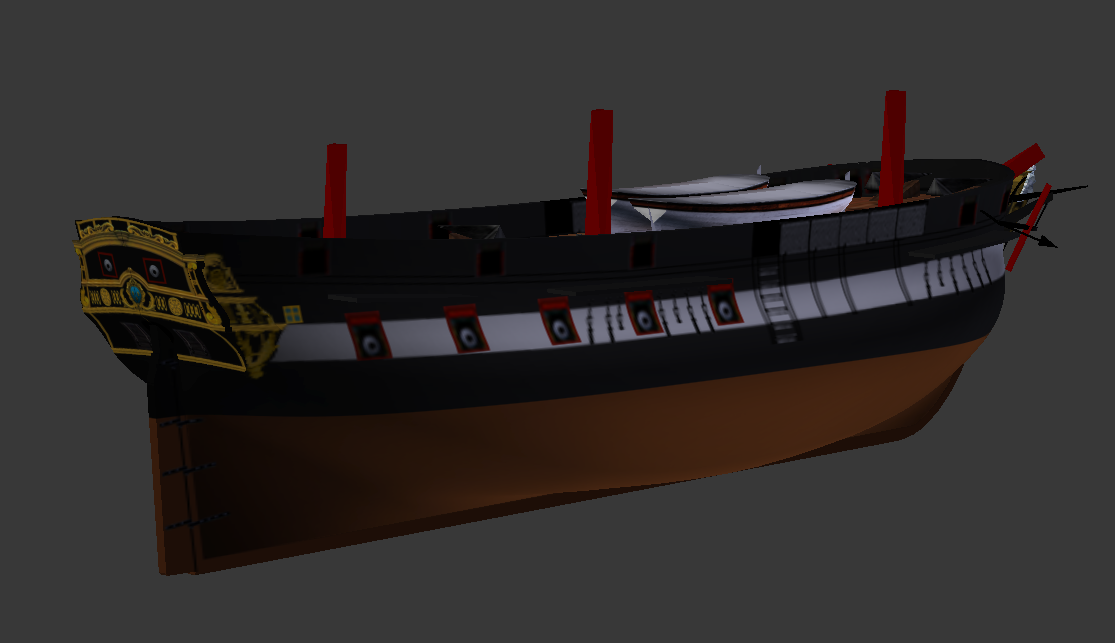
She's still very much work in progress, and many details will are subject to change.
The 998 (21 MG 32) model provided me with necessary justification of applying Napoleonic era style (which I, of course, intended to do anyway, but imagine my happiness when I discovered it was actually done by someone at that time!) and changes to the layout (flush decks, enclosed bow, solid bulwarks), and I intend to follow this model by replacing two fixed mortars with one rotating emplacement.
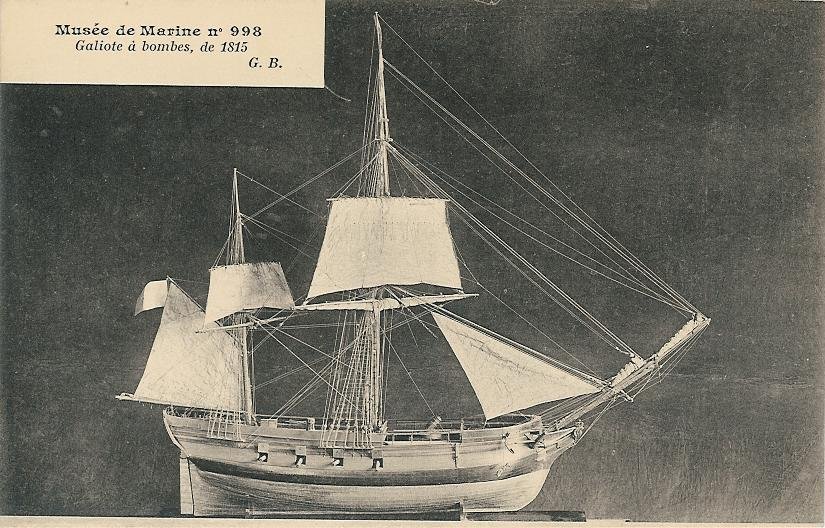

She also differs from the book plan set in being based on the original Coulomb plan rather than on reconstructed one, for the main reason that the original plan was aligned to the waterline and I thought it would be much easier to use it than to make the model on even keel and then rotate it.
My initial plan was to use rotated layout for the stern from the reconstructed set, but it turns out that - while it is certainly not the rule - in this particular case the decoration proposal for the ship fits the original plan very well, as if the designer was, in fact, familiar with the ship's plans and layout. This fit is even better than the reconstruction's, so I extended the purist approach and tried to apply the proposed stern design as is to the model. The difference is primarily in the height of the counters and arc of the taffrail. For the decorations (which are also far from finalized) I used elements from renderings of absolutely marvelous work by @Bernard Huc, with his kindest permission.
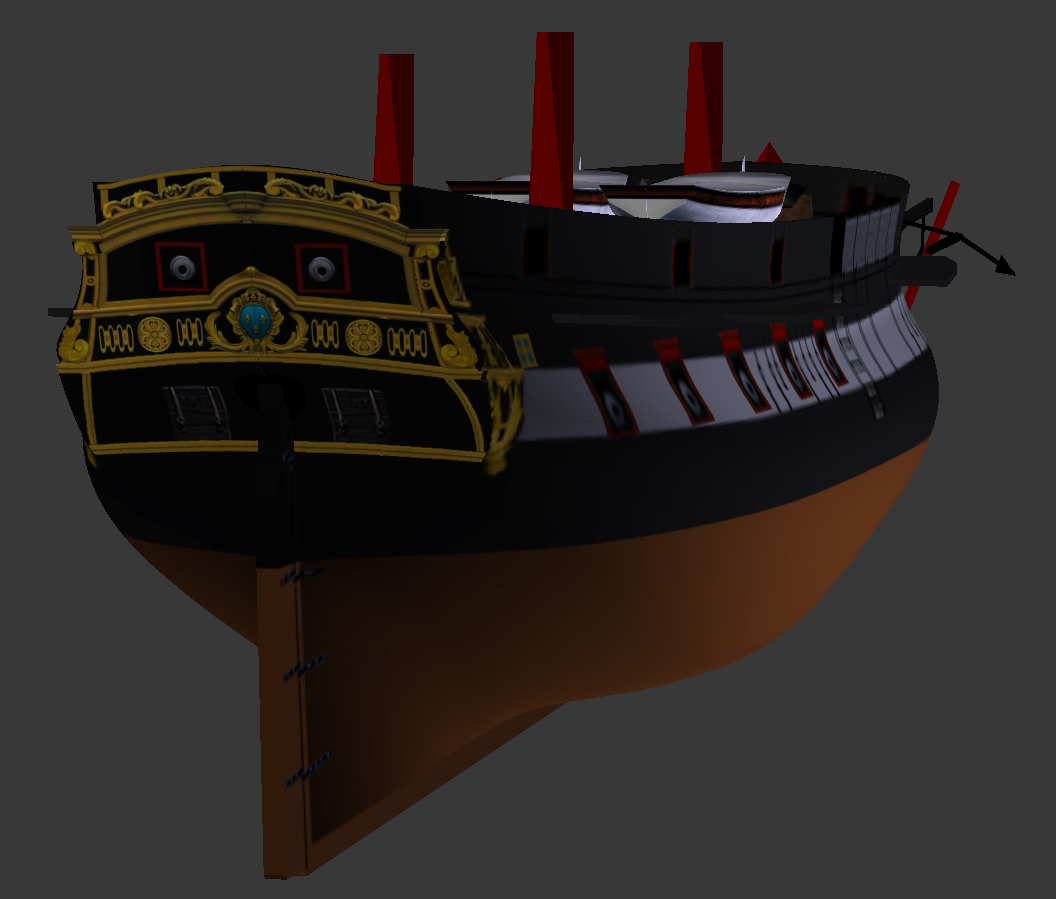
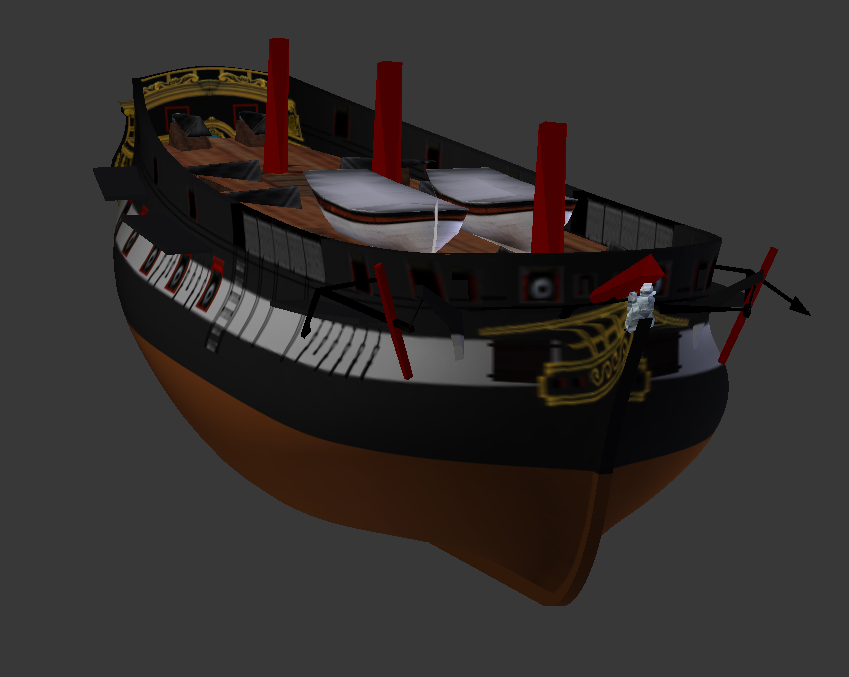
When ready, the model will, probably, have at least three variants. First is the travel configuration, which you can see here. An installed foremast, the bomb well covered with deck and boats. The bombardment configuration will feature visible mortar and have the foremast and the boats removed, and finally a sloop configuration will be similar to the travel, but will instead have a full battery deck with 9 armed port pairs. All that, though, is still a long way off.
- 3DShipWright, chris watton and mtaylor
-
 3
3
-
-
-
18 hours ago, Arstricos said:
I was wondering if you could tell me where you get your blueprints from?
-
-
Thou shall not trust Hahn.
But, seriously, he went so far with structure simplification, that it has nothing to do with how real ships were constructed. Only contemporary practices and examples (the same Constitution) can provide some clues to construction methods.
- 3DShipWright and mtaylor
-
 1
1
-
 1
1
-
3 hours ago, Martes said:
Otherwise it is even more complicated
Note, thought, that the Constitution does have cant framing both fore and aft, as we discussed earlier.
So if you employed cant frames forward on the Confederacy, you possibly should consider doing the same on the aft end...
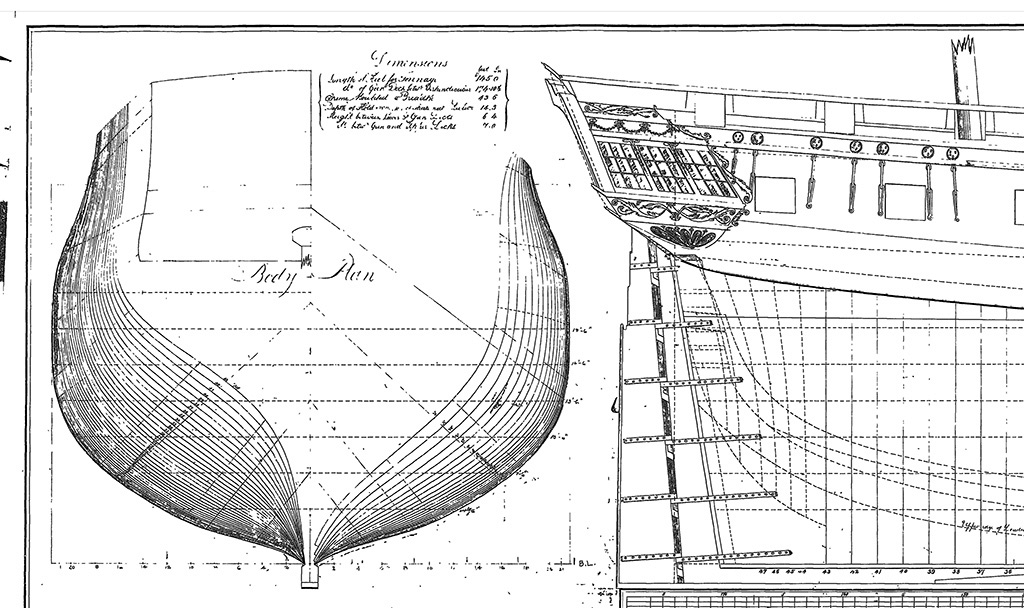
And how dense her framing is.
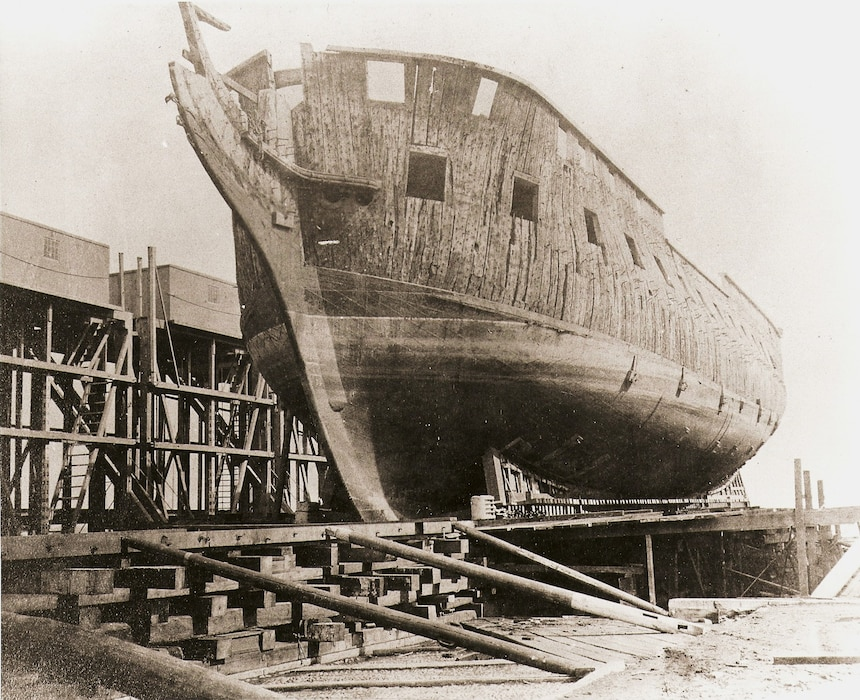
-
2 hours ago, 3DShipWright said:
what the missing piece looks like...
Exactly like it's neighbour to the right.
You missed the diagonal estain - if I remember the name correctly - under it though. The transom pieces do not go into the vertical pair, but rather connected to it and supported by vertical frames from below (at least in French contemporary methods, without cant frames aft). Otherwise it is even more complicated

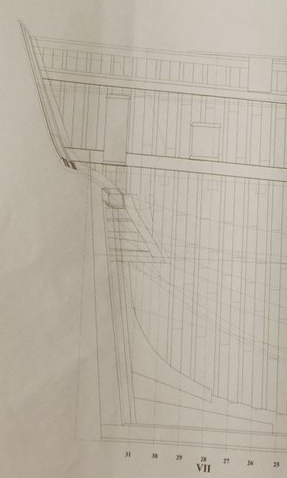


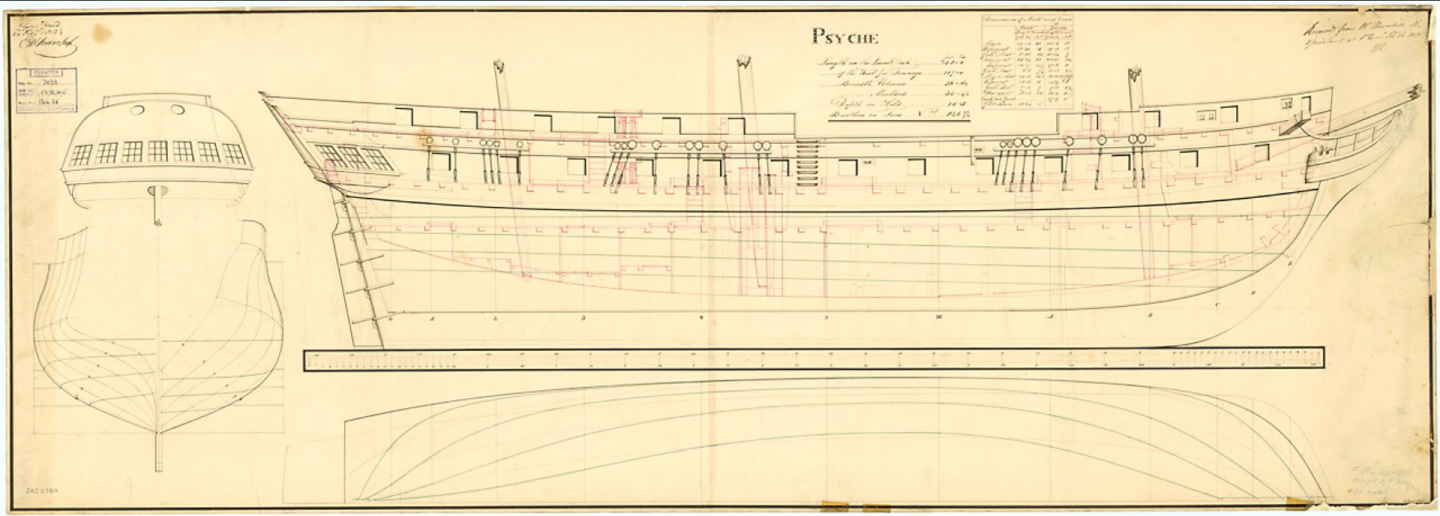
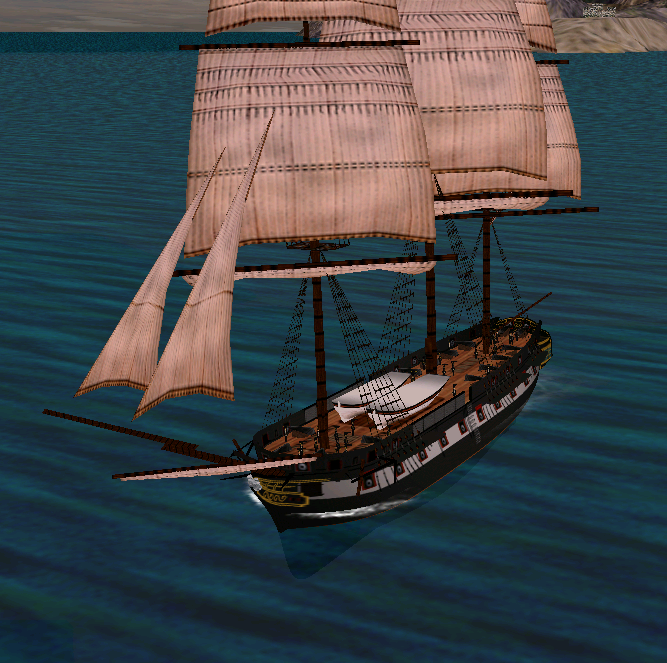
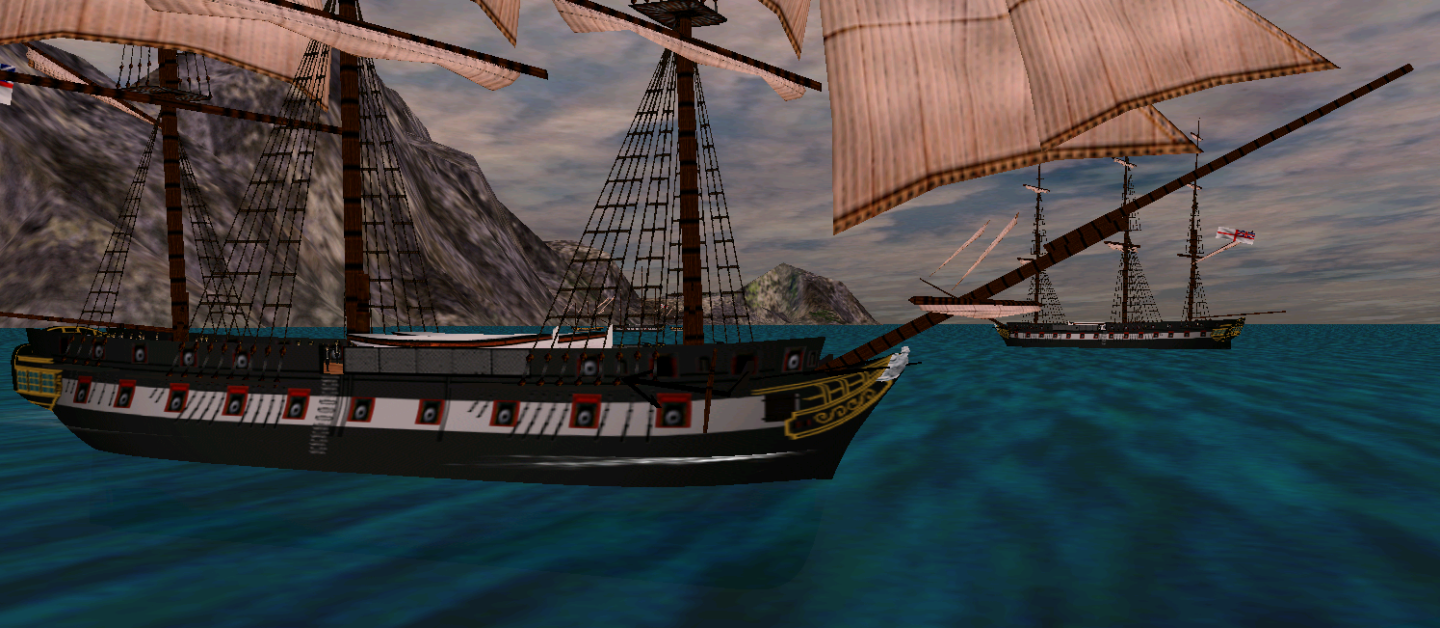

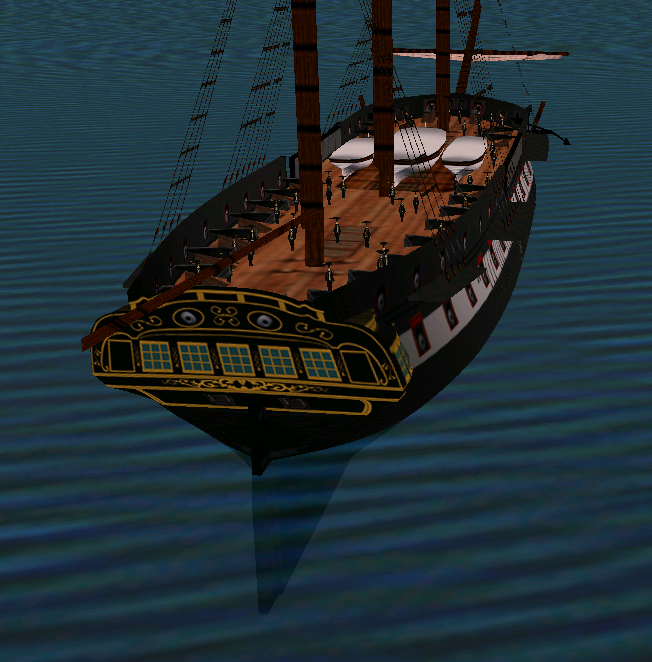
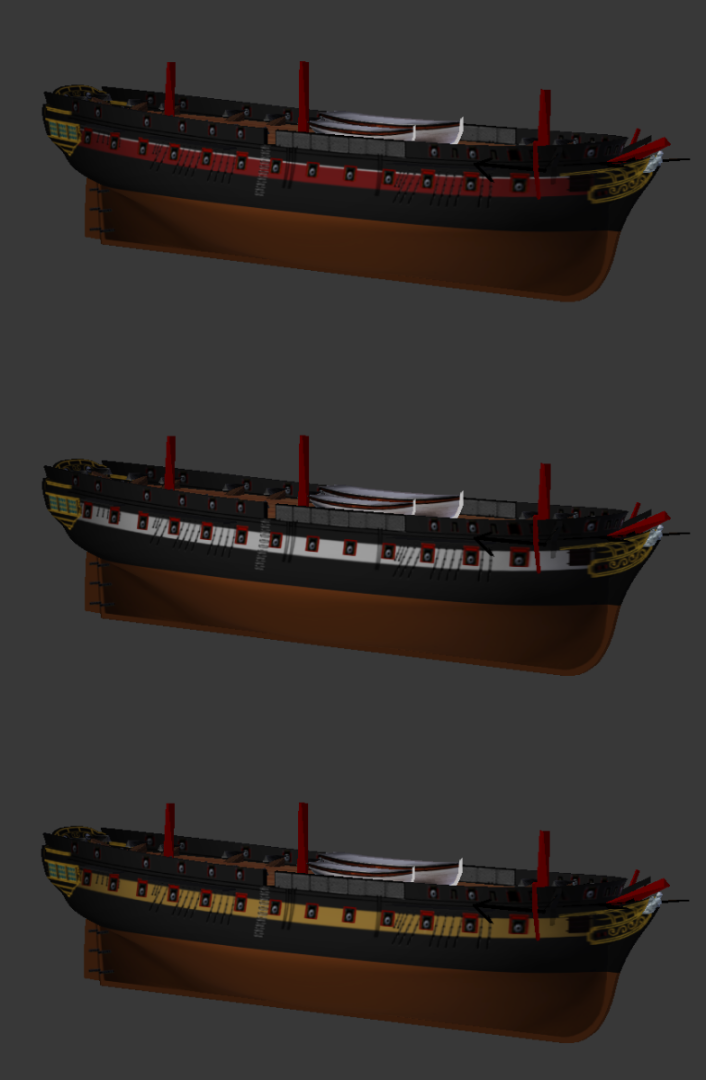
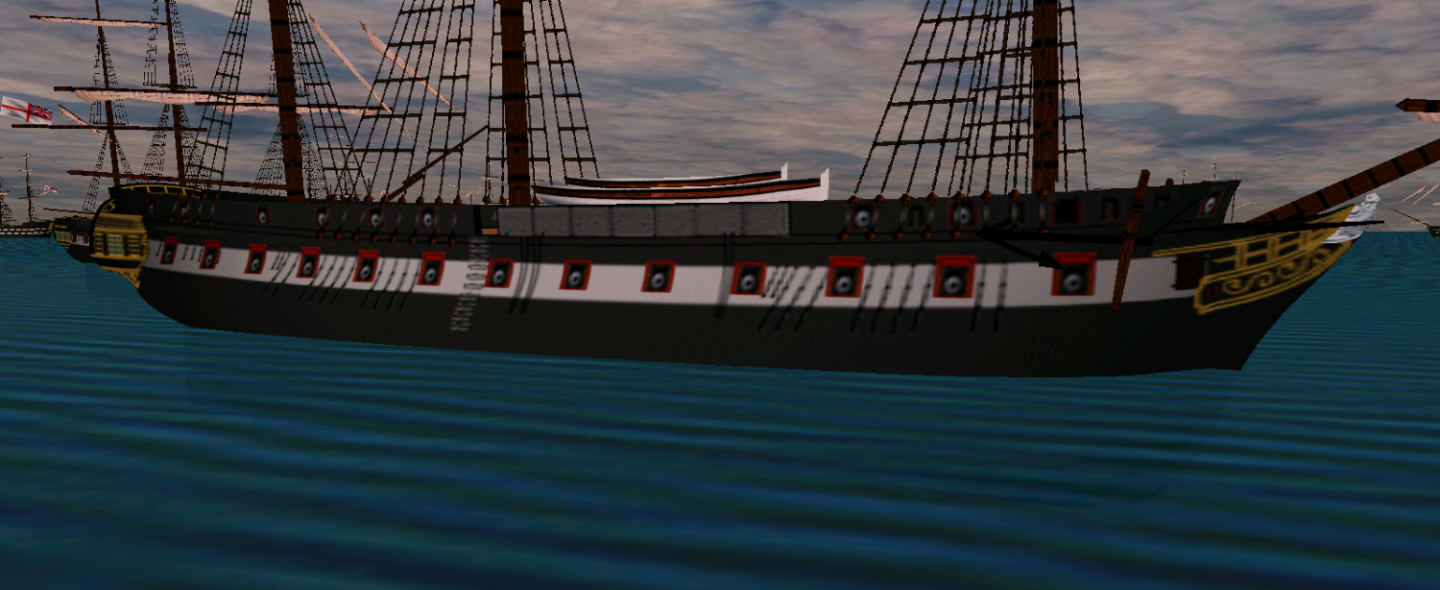
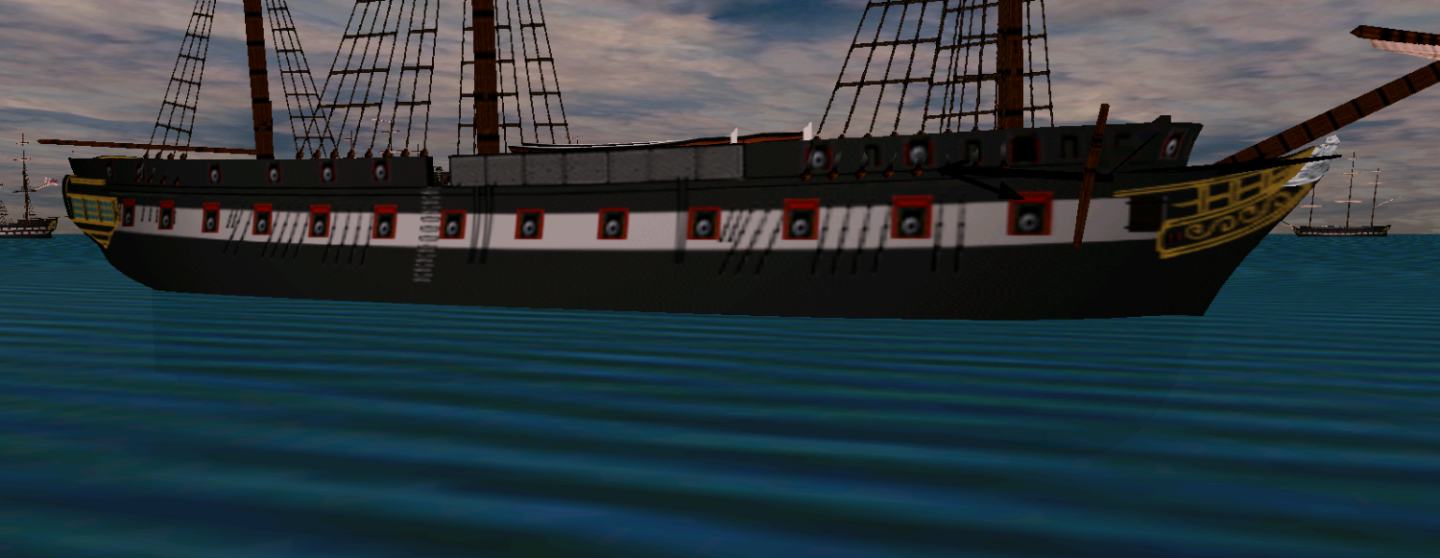
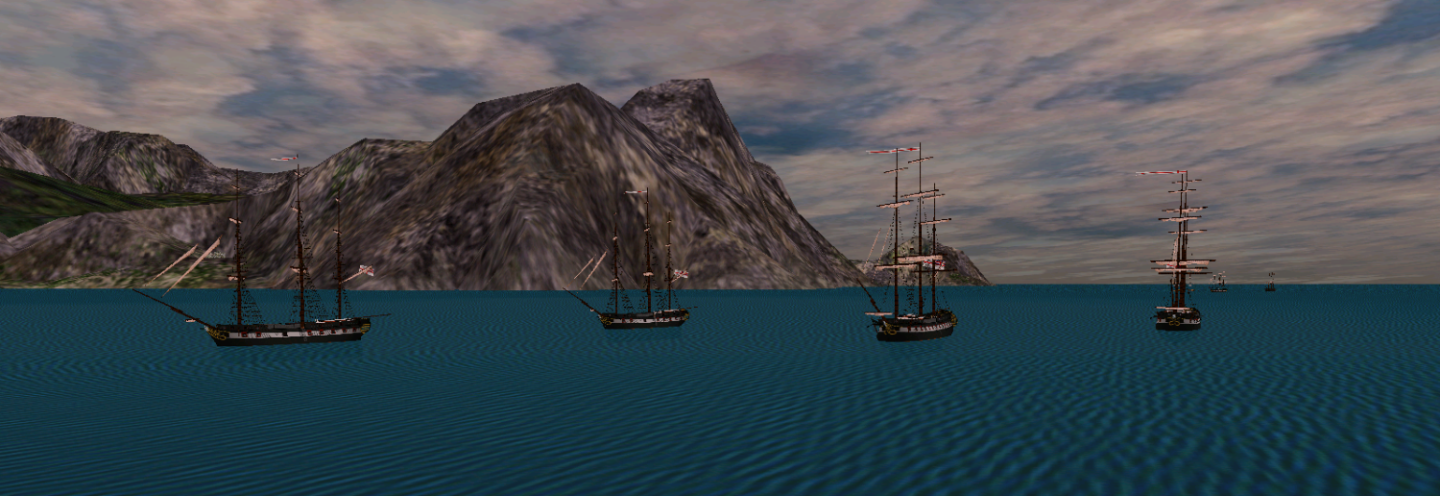

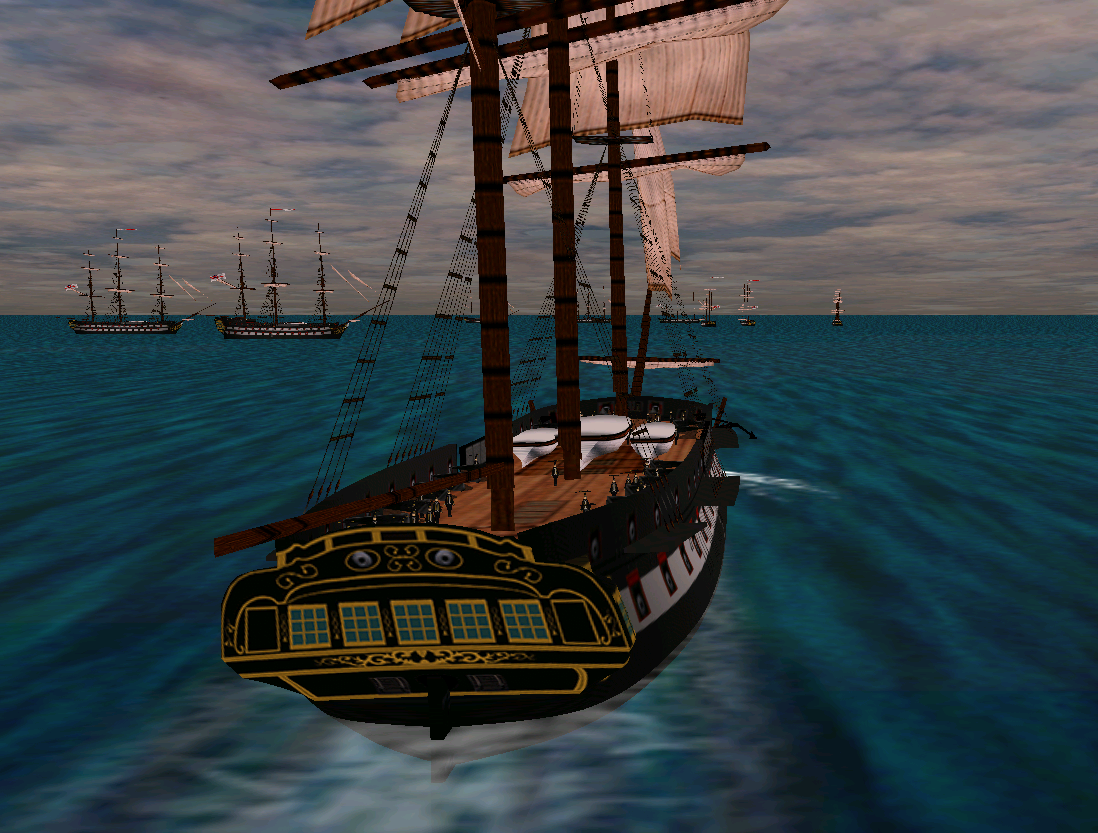
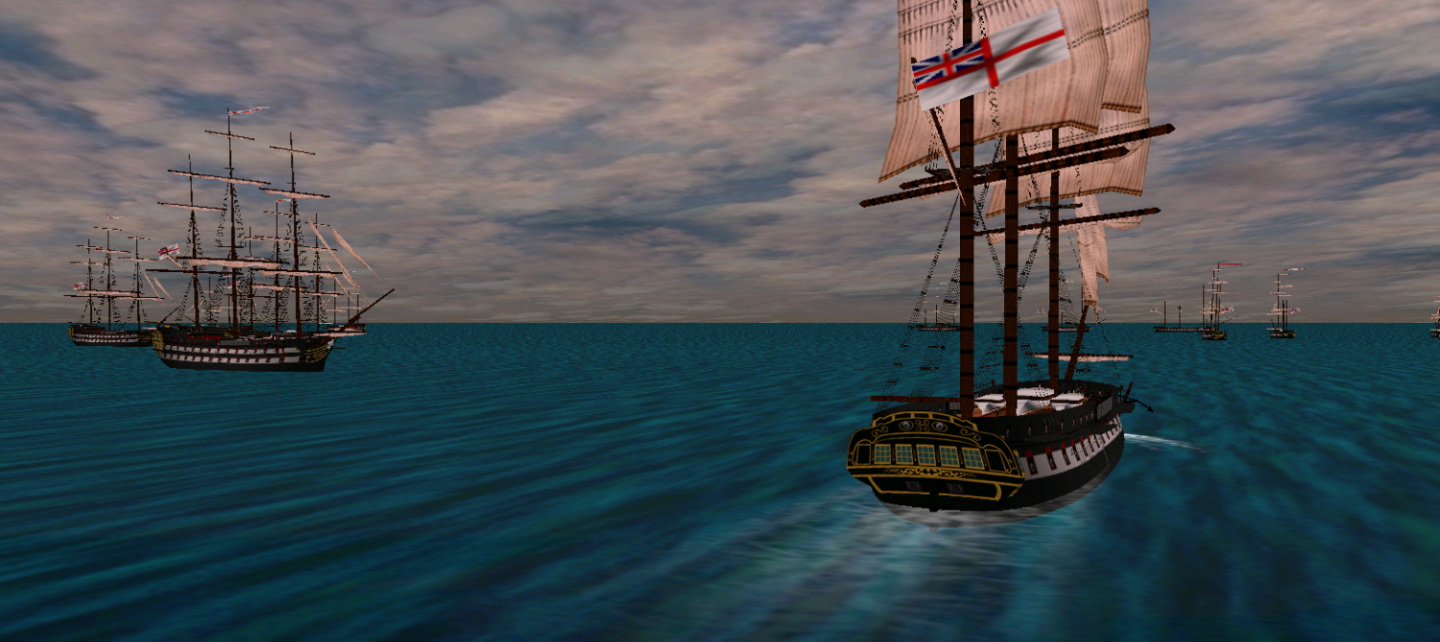
Age of Sail 2 - 3d ship models for PC wargame
in CAD and 3D Modelling/Drafting Plans with Software
Posted
Thank you very much, Gerard!